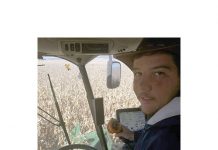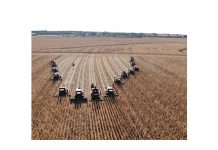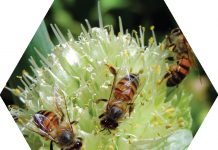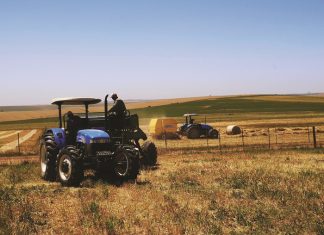December 2018
R MARINDA VISSER, manager: Grain Research and Policy Centre, Grain SA and DR JULIAN JAFTHA, chief director: Plant Production and Health, Department of Agriculture, Forestry and Fisheries
The development of new export markets is becoming increasingly important for grains and oilseeds. Grain SA and the South African Cereals and Oilseeds Trade Association (Sacota) have been in discussion with the technical directorates at the Department of Agriculture, Forestry and Fisheries (DAFF) to start a formal process of engagement on establishing new and maintaining existent markets for grains and oilseeds.
The processes involved in market access are outlined below.
National legislative framework for market access
In order to certify the plant health status of exported commodities, in compliance with the import measures of a trading partner, official phytosanitary regulations are required. Such measures are also needed for safeguarding the pest status of South Africa through appropriate phytosanitary import regulations. Decisions on import measures are made by a country’s officially designated National Plant Protection Organisation (NPPO).
Thus, laws are needed to grant authority to an NPPO to meet the required national phytosanitary responsibilities. These obligations include:
- Issuing official phytosanitary regulations.
- Conducting pest risk analyses, surveillance for pests of quarantine concern.
- Phytosanitary inspection of consignments of regulated articles.
- Issuing phytosanitary certificates and ensuring the phytosanitary security of consignments after certification.
The national phytosanitary regulatory system in South Africa is administered under the Agricultural Pests Act, 1983 (Act no. 36 of 1983) and its associated regulations. The Agricultural Pests Act is under review to address the following:
- Alignment with national and international plant health responsibilities, primarily the Constitution of the Republic of South Africa, the World Trade Organisation Agreement on the Application of Sanitary and Phytosanitary Measures, the International Plant Protection Convention (IPPC) as well as national obligations in the interest of rules-based international trade.
- Provision for appropriate export control.
- Provision for the functions of the NPPO of South Africa (NPPOZA), in accordance with obligations under the IPPC.
- Provision for national control in order to prohibit and/or restrict the movement of potentially pest-infested plant material from infested areas to non-infested areas.
The objective of the reviewed legislation is to provide for phytosanitary measures to prevent the introduction, establishment and spread of regulated pests in order to safeguard South African agriculture and natural plant resources. This is in support of safe and fair domestic and international trade, maintenance of export markets and establishment of new export markets, as well as the economic growth, development and job creation derived from exports.
Partnership with industry
With the focus on market access for South African plant commodities, several private-public partnership forums are maintained by DAFF Directorate Plant Health (NPPOZA policy component), in close collaboration with DAFF Directorate Inspection Services (NPPOZA operational component) as well as Directorate Food Import and Export Standards, responsible for phytosanitary advocacy and awareness. These are the current three components of NPPOZA.
The forums in question aim to draw on all available resources in South Africa to deal with the wide-ranging, science-based technical phytosanitary requirements that market access, maintenance and development demand. Industry plant commodity organisations are represented in these forums.
As most markets require specialised phytosanitary cold treatments to mitigate the risk of specified pests, the Perishable Products Control Board (PPECB) is represented on the forum. PPECB has the relevant expertise and mandate for the execution of this function.
The market access needs of other sectors are addressed through DAFF participation in their forums, or via bilateral meetings at mutually agreed intervals, for instance with the South African Seed Industry (SANSOR), Grain SA and Sacota.
Processes involved in market access
Industry identifies a potential international market and provides a written request in this regard to DAFF. A priority list is developed for plant commodities to be exported to the major target markets. Historically, this is done on a first-come, first-served basis, usually reflecting the size or resources of the industry involved. The lists are reviewed, as required, by the industry.
On receiving the industry’s written request for market access, DAFF Directorate Plant Health sends a letter of request to its technical counterpart (NPPO) in the target country. Depending on the country concerned, this may be communicated via the DAFF Agricultural Attaché for that country, or directly to the official contact point of the NPPO of that country, and copied to the relevant DAFF Attaché.
At the same time, the NPPO of the target country is requested to provide its pest information questionnaire. This covers all the scientific and technical information the plant health authorities need for conducting a scientific phytosanitary import risk analysis, or pest risk analysis. Risk management decisions are based on the assessment of the pest risk involved for a specific commodity and its country of origin. The import requirements are designed to manage the anticipated risk of pests accompanying the commodity that are not already present in the importing country, at a level of protection acceptable to the importing country.
In South Africa, the required pest information package is compiled by industry technical experts, and scrutinised by the DAFF Pest Risk Analysis team and other components, if relevant, to ensure that it is correct and complete. When it has been finalised, Directorate Plant Health provides it as an official document to the plant health authorities (NPPO) of the trading partner.
The scientific pest risk assessment process includes categorisation of the listed organisms as quarantine pests or not; assessment of the probability of their entry; establishment and spread in the importing country; and assessment of the potential negative consequences of introduction into the importing country.
Once an organism has been listed as a quarantine pest that is likely to follow the specific commodity pathway and establish in the importing country, management options are investigated. These must be necessary, proportional to the estimated risk, feasible and the least trade restrictive. Environmental and socioeconomic issues must also be considered appropriately.
Exchanges of technical communications between the plant health authorities of the two countries continue until the potential importing partner has completed its risk analysis, communicated the identified pest risks to the potential exporting side, and the two NPPOs have reached agreement on the required import measures.
For exports, NPPOZA must strive to ensure that the phytosanitary import requirements of its trading partners are necessary, technically justified and the least trade restrictive. In the process, differing opinions may arise and trading partners may require additional information as technical justification for South Africa’s viewpoints or requests.
The importing side provides its draft pest risk analysis report for consideration of the NPPO of the exporting country and, based on the results of the pest risk analysis report, its draft phytosanitary import measures for the commodity in question. Sometimes this is a two-step process.
To conclude the risk analysis process and/or initiate exports, most importing countries need to send at least one technical team to South Africa. The intention is to observe and inspect production areas, farms and export facilities with the aim of ensuring that all required phytosanitary measures are in place.
For such visits to South Africa, DAFF Directorate Plant Health obtains confirmation from the industry involved that it will fund the visit according to the trading partner’s specifications.
When the NPPOZA is satisfied that the best agreement possible in the circumstances has been negotiated within the parameters agreed with industry, the agreement may be concluded. It is then subjected to the required processes in the importing country and put into action. Alternatively, it may need to be signed at a high government level, between the responsible ministers. Both types of processes may take an additional several months.
After signing and/or completion of the required official procedures, operational and technical arrangements for trade in these commodities may proceed. This usually requires the provision to the phytosanitary authorities of the importing country of an official list of approved production units and pack houses, each facility having a unique code for traceability purposes.
In South Africa, this relies on the DAFF Food Business Operator (FBO) coding process, managed by DAFF Directorate Food Safety and Quality Assurance. The first step towards compliance with phytosanitary import requirements entails an official registration and verification procedure for the farms and facilities involved. The required processes and databases are managed by DAFF Directorate Plant Health, and the inspection and verification process undertaken by Directorate Inspection Services.
Government support
In view of the processes involved, market access demands long-term strategic planning, and identification of those commodity-market pairings with the highest economic potential in order to obtain maximum economic benefit for South Africa.
As indicated, in South Africa and most of its target markets, the technical access process entails a time-consuming series of steps, including pest risk assessment and development of risk management options for those pests that are reasonably expected to be associated with the plant part to be traded as well as negotiation of the least trade restrictive risk mitigation measures.
The key to phytosanitary market access and maintenance is the availability of an adequately resourced, effectively co-ordinated official NPPO, and the capacity to provide reliable, up to date scientific and technical information on all the pests associated with a particular commodity in the country of origin. It also demands a credible phytosanitary verification, inspection and trace-back system in order to ensure compliance with the phytosanitary import requirements of international target markets.
Another pillar for market access and maintenance is the maintenance of a credible phytosanitary inspection, verification and certification system upon which trading partners can rely to ensure compliance with their phytosanitary import requirements. This requires competent pest diagnostic support services.
For scientific and technical information, DAFF relies heavily on support from technical experts in the commodity organisations involved. They have specialist knowledge of the commodity concerned as well as more ready access to scientific journals and funding for research than DAFF.
Market access and maintenance also require the capacity and resources to conduct pest surveys and pest surveillance. This is necessary in order to monitor and verify pest status in South Africa, as well as support an early detection system for pests of quarantine concern.
Members of the IPPC are required to inform trading partners of any change in phytosanitary status that may pose a risk in international trade.
In terms of compliance with import requirements, DAFF relies on producers’ capacity and commitment to monitor, manage and mitigate the risks of pests of quarantine concern to the importing country, and industry support to producers in this respect.

Publication: December 2018
Section: Relevant

















